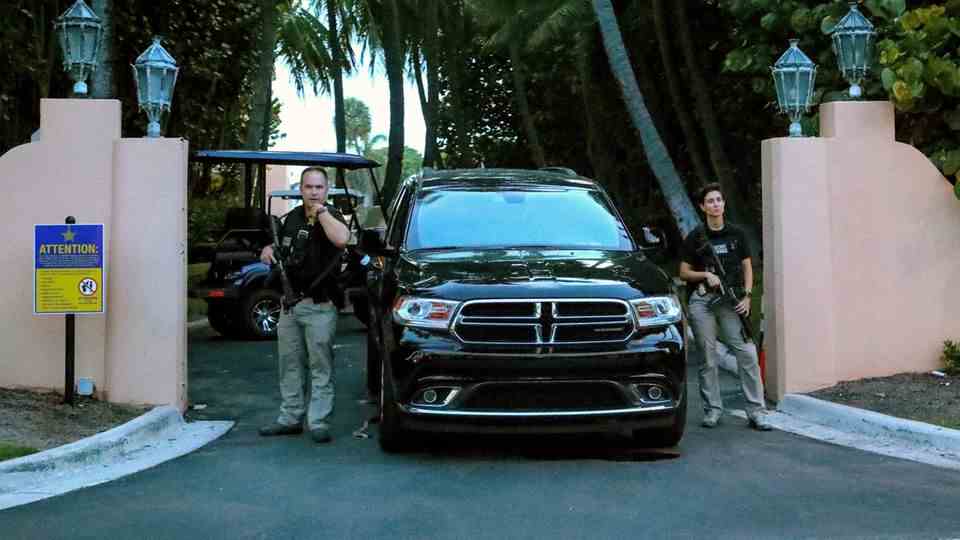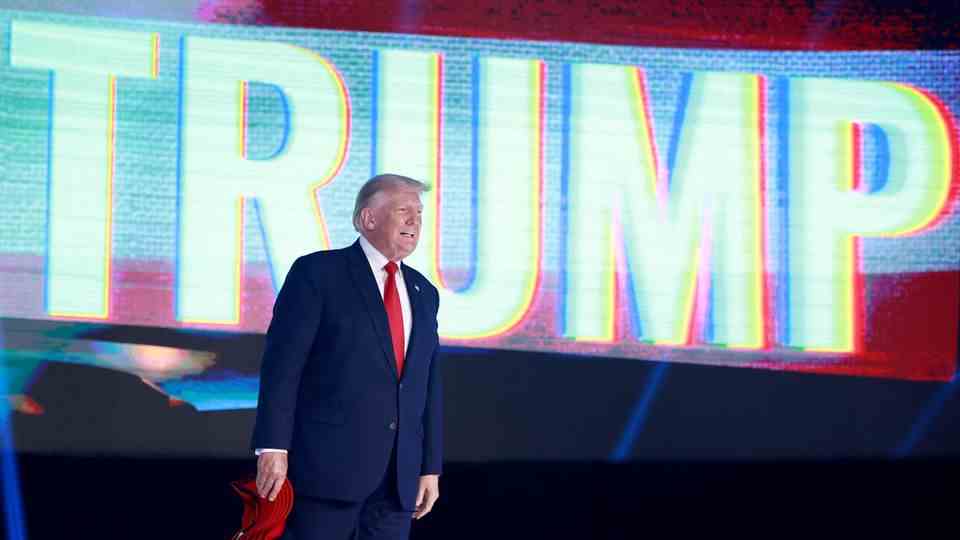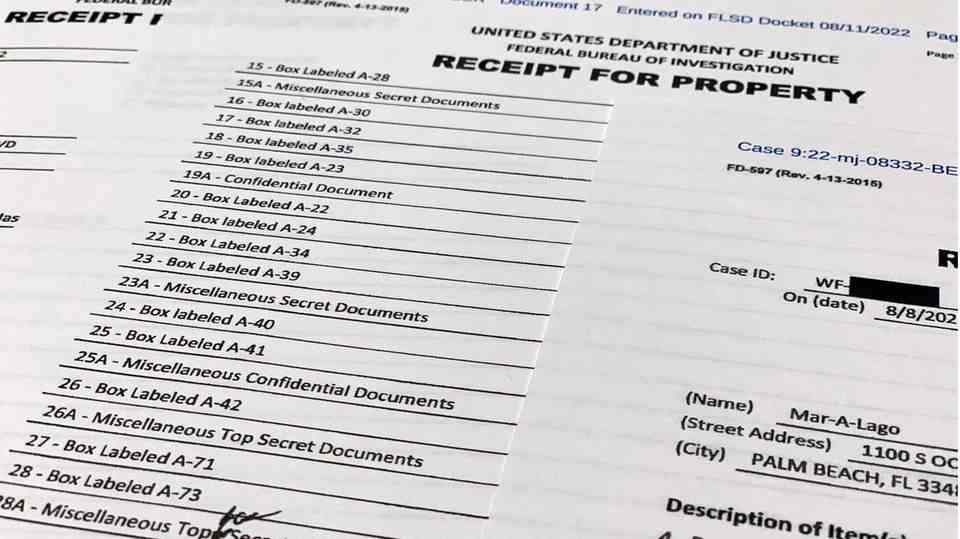Raid in Florida
Trump’s Hoarded Documents: What Makes Documents “Top Secret?” And who decides that anyway?
Donald Trump last week in New York City: While the former US President was in the Big Apple, the FBI searched his property in Palm Beach, Florida
© AFP
Donald Trump is said to have taken secret documents from the White House after his election defeat in 2020 and kept them in his Mar-a-Lago estate. But what is actually behind the classification of documents as “top secret”?
After the US Federal Police FBI raided Donald Trump’s property in Florida, the former US President is in need of explanations. According to the FBI list, last week in Mar-a-Lago, agents found numerous classified documents of various classification levels that Trump allegedly brought to Palm Beach from the Oval Office. The 76-year-old may have violated several laws, including the US Espionage Act, by taking and storing these documents, which are said to include documents on nuclear weapons.
Donald Trump could face imprisonment
The search warrant lists three criminal offenses as possible grounds for possible seizures: collecting, transmitting or losing defense information, removing or destroying official documents, and destroying or altering documents to impede investigations. The first point can be punished with up to ten years imprisonment, the second up to three years and the third up to 20 years imprisonment.
But what exactly is classified information in the US and what is its purpose? And when and why can a document be released and who is authorized to do so? the US newspaper “USA Today” has compiled the following questions and answers:
What is classified information?
Classified or national security information refers to documents or other intelligence media that the government has determined are sensitive and the unauthorized disclosure of which would pose a potential threat to national security.
What levels of secrecy are there?
To U.S. Senate Intelligence Committee data there are three main levels of secrecy:
- Hush-hush: Information that, if disclosed without authorization, would cause “extraordinarily serious harm to national security.”
- Secret: Information the unauthorized disclosure of which is likely to cause “serious” harm to national security.
- Confidential: Information which, if disclosed without authorization, is suspected to pose a threat to national security.
What are the requirements for access to classified information?
Numerous federal employees of various authorities have access to classified information of different classification levels. Once authorized by an officer for such access, an individual is subject to a security clearance by the Executive Office of the President (EOP), led by the President’s Chief of Staff. The person must also sign a confidentiality agreement. According to the United States Department of Justice, the security clearance includes an extensive background check, which also examines personal history.
What types of secret documents are there?
According to the Senate Intelligence Committee, the following types of documents qualify for classification:
- military plans, weapons or operations;
- vulnerabilities or capabilities of systems, facilities, projects or plans affecting national security;
- foreign government information;
- Intelligence activities (including Special Activities) or intelligence sources or methods;
- foreign relations or foreign activities of the United States;
- Scientific, technological or economic matters related to national security;
- United States government programs to secure nuclear material or facilities;
- cryptology;
- Confidential Sources;
- Other categories of national security-related information requiring protections from unauthorized disclosure as determined by the President or by agency heads or other officials to whom the President has delegated classification authority.
What is an example of a secret document?
A famous example of a classified document or group of documents is the Pentagon Papers, whose unauthorized publication by Defense Department analyst Daniel Ellsberg rocked the US political climate in the early 1970s. The papers, which were given to the Washington Post and the New York Times, contained a secret study commissioned by the Pentagon into Vietnam policy by successive American administrations spanning more than three decades. They document how the American public was lied to during the Vietnam War. The information contained in the Pentagon Papers falls under the classification of “military plans, weapons or operations”.
Who classifies documents?
The power to classify documents was in a executive order signed by President Barack Obama in 2010 fixed. The decree defines this authority as “classification authority” and assigns it to the following persons:
- President and Vice President
- Heads of agencies and officials designated by the President
- Other U.S. government officials who are empowered by agency heads
The Decree states that the authorities are responsible for limiting their subordinates’ access to classified information to those documents that they need to do their job and ensuring that their subordinates have an ongoing need for that access.
How long do secret documents stay secret?
That is different. The rules for declassification are as follows:
- In the classification, the authority responsible for the classification sets a date by which it deems the sensitivity of the national security threat to be no longer given. On this date, the classification will be automatically removed.
- There is an exception to the above time frame when the classification would reveal “a confidential human source or a human intelligence source or important design concepts of weapons of mass destruction”.
- If the person who issued the classification cannot set a suitable date for the automatic declassification, the classification will remain in place for 10 years, or even 25 years for particularly sensitive information.
- No information can be classified indefinitely.
Why are documents classified?
Documents are classified for reasons of national security.
In his executive order, which outlines the process for classifying and declassifying important government records, President Obama recognized the importance of the free flow of information and transparency before stating that certain records required a degree of secrecy in order to protect the American public, to protect internal security, our democratic systems and our relations with other foreign states.
Sources: “U.S. Today”, US Senate Intelligence Committee, U.S. government, Deutschlandfunk






